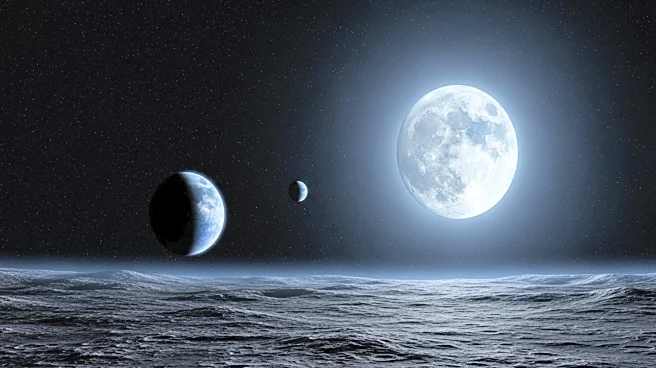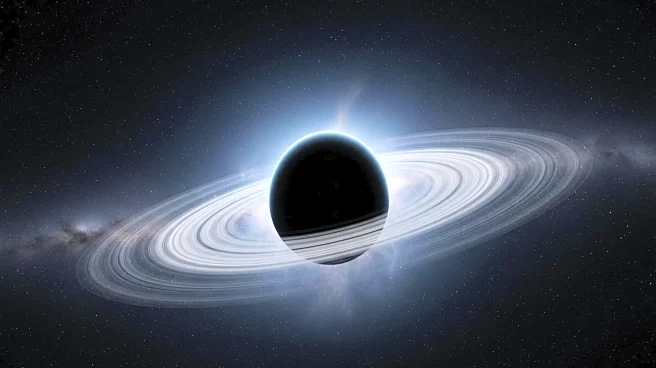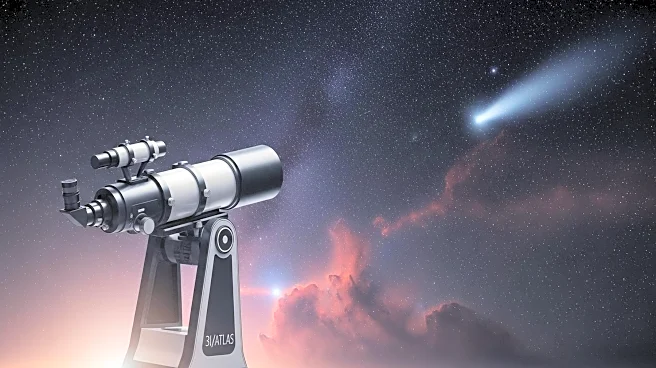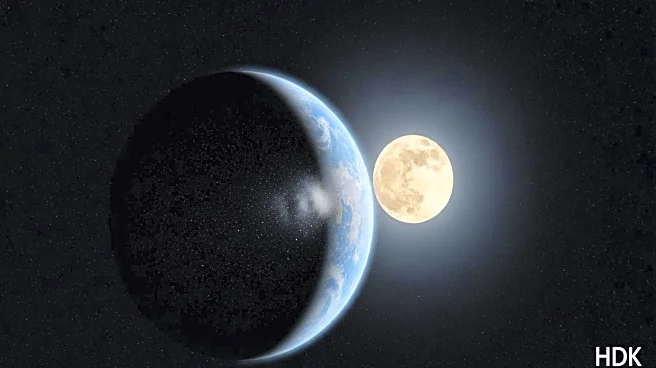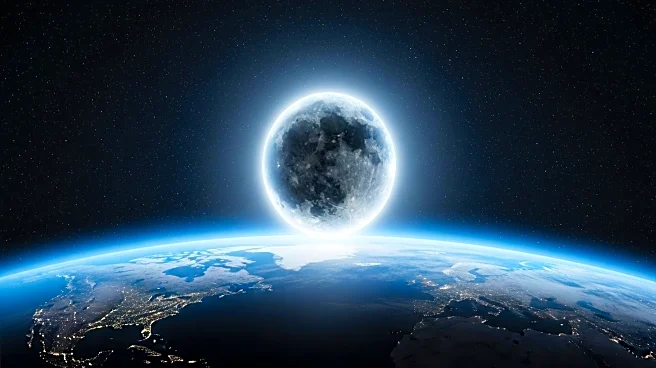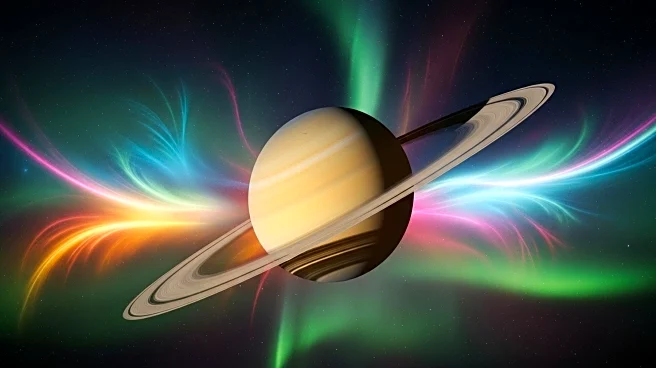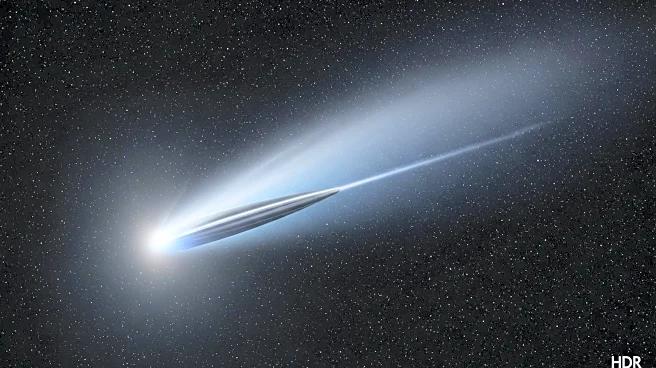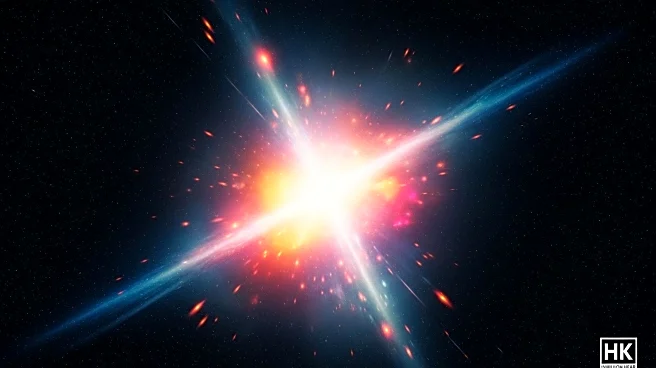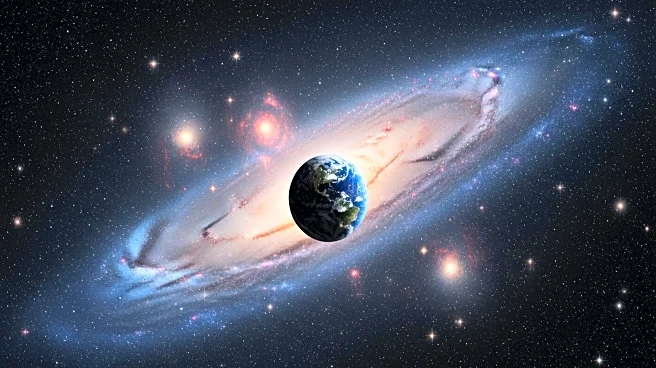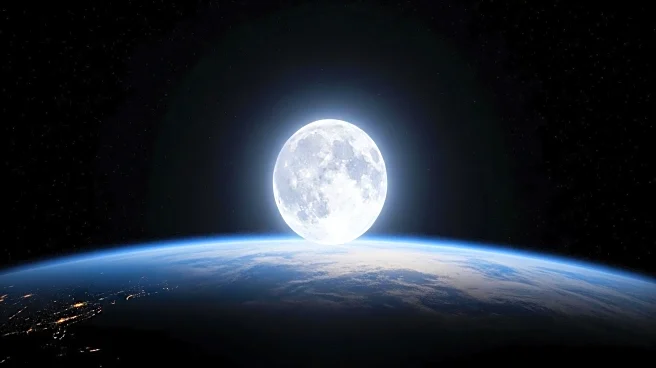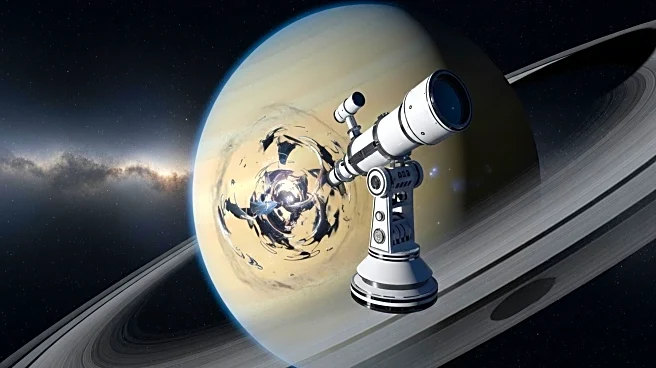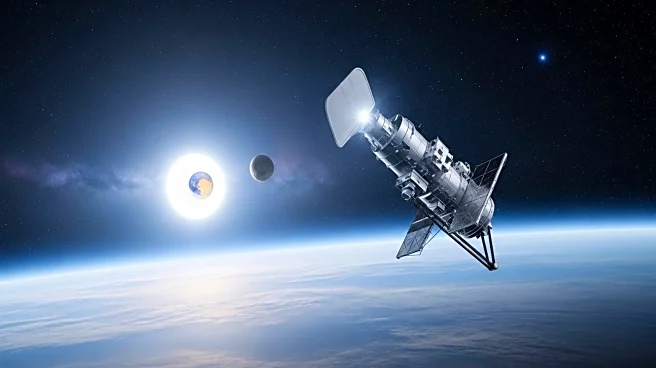What is the story about?
What's Happening?
The moon is gradually moving away from Earth at a rate of approximately 1.5 inches per year. This phenomenon is primarily driven by tidal forces, which result from the gravitational interaction between the Earth and the moon. As the moon's gravity creates tidal bulges on Earth, these bulges exert a forward pull on the moon, causing it to accelerate and expand its orbit. This process has been ongoing since the moon's formation about 4.5 billion years ago, when it was much closer to Earth. Scientists measure the moon's distance using lasers bounced off mirrors placed on its surface by astronauts, allowing precise calculations of its movement over time.
Why It's Important?
The moon's increasing distance from Earth has several implications for our planet. As the moon gains momentum and its orbit expands, Earth's rotation slows down, leading to slightly longer days. This exchange of momentum between the Earth and moon affects tidal patterns, which are crucial for various ecological and human activities. While the changes are gradual and imperceptible on a daily basis, understanding these dynamics helps scientists predict long-term shifts in Earth's rotation and tidal behavior. Additionally, the study of the moon's movement provides insights into the history and evolution of the Earth-moon system.
What's Next?
In the distant future, the moon's continued drift could lead to a scenario where Earth's rotation becomes tidally locked with the moon, meaning both would rotate at the same rate. However, this is unlikely to occur due to other cosmic events. In about a billion years, the sun's increased brightness may evaporate Earth's oceans, halting the tidal forces that drive the moon's movement. Eventually, the sun's expansion into a red giant could destroy both Earth and the moon. These events are far off, allowing humanity to continue enjoying the moon's presence and its effects on tides and eclipses for millions of years.
Beyond the Headlines
The moon's gradual drift away from Earth highlights the intricate gravitational dance between celestial bodies and its impact on planetary systems. This phenomenon underscores the importance of understanding cosmic interactions and their long-term effects on Earth's environment. The study of tidal forces and orbital dynamics not only enriches our knowledge of astrophysics but also informs future space exploration and potential colonization efforts. As scientists continue to unravel the mysteries of the universe, the moon's movement serves as a reminder of the interconnectedness of celestial phenomena.
AI Generated Content
Do you find this article useful?
